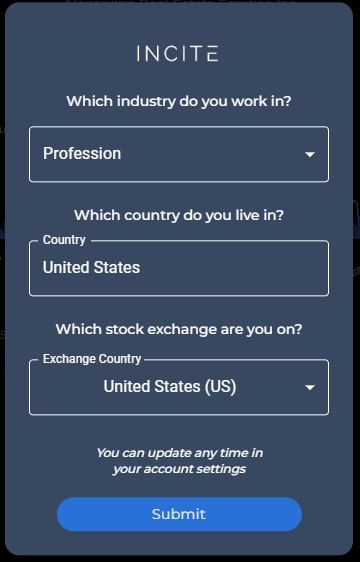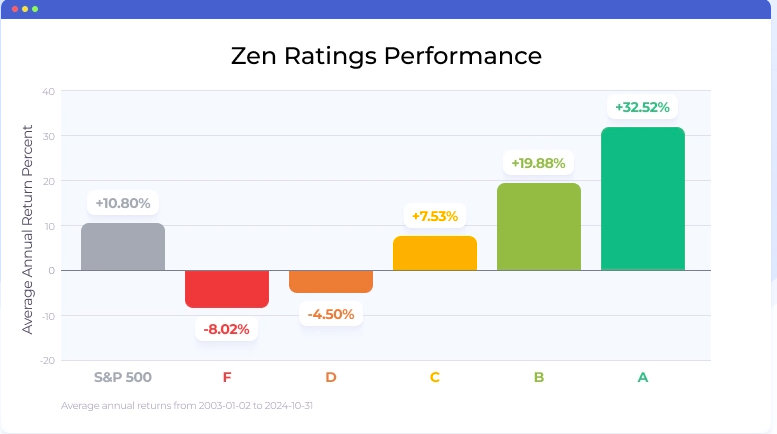20 Good Info To Picking AI Stock Picker Platform Sites
20 Good Info To Picking AI Stock Picker Platform Sites
Blog Article
Top 10 Suggestions For Evaluating The Strategy Customization Of Ai Stock Predicting And Analyzing Trading Platforms
The ability to customize strategies is an essential characteristic of AI trading platforms that predict and analyze stocks that allow users to adapt the platform to their specific trading goals as well as their risk tolerance and market conditions. Platforms that offer many customization options will improve the performance of your trading. Here are the top 10 strategies for evaluating the customizable options of these platforms.
1. Evaluate Pre-Built Strategy Templates
Variety of templates: Check if the platform offers a range of pre-built strategies for different trading styles (e.g., swing trading, day trading, long-term investment).
Easy of use: Evaluate the ease of modifying and adapt these templates to your requirements.
Performance historical data. Verify whether the platform contains historic performance data for previously built strategies.
2. Review the effectiveness of Custom Strategy Creation
Drag-anddrop tools: Look out for platforms that have intuitive drag and drop interfaces to customize strategies.
Coding Options: If you are a skilled user, ensure that the platform is able to support the creation of custom codes.
Flexibility. Be sure to identify key elements such as risk management parameters, entry/exit regulations, as well as any other elements that make up your plan.
3. Check for Backtesting Capabilities
Data historical: See whether there is enough data to backtest your strategies.
Configurable settings: Make sure that you are able to modify settings during backtesting.
Performance metrics: Find out if the platform includes precise performance metrics for example, win rate (e.g. Sharpe ratio) drawdown, win rate and various other metrics, for strategies that have been tested back.
4. Evaluate Real-Time Strategy Testing
Simulation or paper trading Make sure the platform supports paper trading modes that let you try out trading strategies in real time and without risking money.
Live testing: Determine whether you're able to test your strategies in real-world markets with only a small amount of capital.
Real-time adjustments: Check to see if your strategy can be adapted in real-time to the market conditions.
5. Integrate Integration with Technical Indicators
Indicator Library: Check if the platform has a library of technical indicator (e.g. moving averages, RSI or MACD).
Custom indicators. Make sure you are able to develop or utilize customized indicators as part of your strategy.
Combination of indicators Look to see if the system allows combining multiple indicators to support complex strategies.
6. Check for Risk Management Tools
Stop-loss/take-profit: Ensure the platform allows you to set stop-loss and take-profit levels within your strategies.
Size of the position: Determine whether you're able to set up rules for the size of your position (e.g. an amount fixed or percentage of the portfolio) to control risk.
Risk-reward ratio: Verify whether the platform allows setting risk-reward ratios on individual trades or strategies.
7. Evaluate Multi-Asset Strategy Support
Asset Classes: Check that the platform is able to support strategies from multiple asset types (e.g. ETFs and Options, Forex and Stocks).
Cross-asset strategies: Determine if you are able to create strategies that include different asset classes (e.g. pairs trading, hedging).
Market coverage: Make sure the platform you are interested in covers the markets you are interested in (e.g. US or international cryptocurrencies, copyright).
8. Evaluate the automation and Execution
Automated Trading: Check that the platform can automate the execution of strategies that are based on predefined rules.
Types of orders: Examine to see if the platform permits different order types (e.g. limit or market) in the course of executing a strategy.
Latency: Determine if the platform can perform trades fast, especially for high-frequency trading strategies.
9. Check out Strategy Optimization Tools
Parameter optimization: Make sure the platform provides tools for optimizing strategy parameters (e.g. grid search and genetic algorithm).
Machine learning: Ensure the platform is machine learning to help refine and improve strategies.
Scenario analysis: Determine if the platform allows testing strategies under different market scenarios (e.g., bear, bull or volatile).
Review User Support for Community Reviews and Feedback
User reviews: Examine reviews from users to assess the platform's effectiveness for strategy customization.
Community forums: Find out whether the platform has an active community in which users share and discuss custom strategies.
Support resources: Ensure that the platform offers tutorials, webinars or documentation to help users create and optimize strategies.
Bonus Tips
Trial period: Experience the platform's customization features without cost with a demo or demo.
Scalability: Make sure the platform can handle increasingly complex strategies as your trading grows.
Support for customers: Check if the platform offers support for any strategy-related concerns.
By following these tips, you can effectively assess the ability to tailor strategies for AI platforms for analyzing and predicting stocks, ensuring you choose a platform that aligns with your objectives in trading and lets you develop and improve your strategies effectively. A platform with robust customization features can enable you to adjust to changes in market conditions and enhance the efficiency of your trading. Have a look at the best full article about ai trading tools for website advice including ai stock, ai for stock trading, best ai trading app, ai trade, using ai to trade stocks, investment ai, ai for investment, chatgpt copyright, ai stocks, market ai and more.
Top 10 Tips To Assess The Transparency Of Ai Stock Trading Platforms
Transparency is an important aspect when it comes to evaluating AI-driven stock prediction platforms and trading platforms. Transparency is crucial because it allows users to trust the platform, be aware of the choices made, and check the accuracy. Here are the top ten tips to evaluate transparency on such platforms.
1. AI Models explained in detail
TIP: Make sure the platform clearly explains the AI algorithms and models utilized to predict.
What's the reason? By understanding the technology, users are able to evaluate its reliability and drawbacks.
2. Disclosure of Data Sources
TIP: Determine if the platform discloses the data sources it uses (e.g. historical stock information, news, social media, etc.).
The reason is that knowing the source of information ensures that the platform has reliable and accurate data.
3. Performance Metrics and Backtesting Results
TIP: Always look for transparent reporting on performance metrics, such as accuracy rates and ROI, in addition to the results of backtesting.
This will allow users to check the effectiveness of the platform and also its historical performance.
4. Real-Time Updates and Notifications
Tips. Check if the platform provides real-time data and alerts regarding trades or modifications to the system, such as trading forecasts.
Why? Real-time transparency allows users to be updated on every critical action.
5. Limitations and Open Communication
Tip: Make sure the platform discusses openly the risks and limitations of its trading strategies and forecasts.
Why? Acknowledging the limitations of a product builds trust, which helps users make better decisions.
6. User Access to Raw Data
Tips: Determine if users can access raw data, or even intermediate results used by the AI models.
The reason: Users can conduct their own analysis with the raw data as well as validate their predictions.
7. Transparency of charges and fees
Check the terms and conditions of the platform you're considering.
Transparent Pricing: It creates trust by preventing unexpected costs.
8. Regularly scheduled report and audits
Find out if the platform produces regular reports or is subject to audits by third party auditors to verify its effectiveness.
Why independent verification enhances credibility and accountability
9. Predictions and Explainability
Tips: Make sure the platform offers information about how recommendations or predictions (e.g. importance of feature or decision tree) are made.
Why: Explainability helps users comprehend the rationale of AI-driven decisions.
10. User Feedback and Support Channels
Tips: Make sure the platform provides open channels to receive feedback from its users and provides assistance. Also, you should determine whether it responds to user complaints in a clear and transparent manner.
What is Responsive Communication? It demonstrates an interest in transparency and the satisfaction of users.
Bonus Tip: Regulatory Compliance
Assure that the platform is compatible with all relevant financial regulations. It adds an additional layer of trustworthiness and transparency.
When you carefully evaluate these elements, it is possible to evaluate whether an AI-based stock forecasting and trading system is operating in a transparent manner. This lets you make informed decisions and build confidence in the capabilities of AI. Take a look at the best trading ai tool for website recommendations including how to use ai for stock trading, ai in stock market, best ai stock prediction, best stock prediction website, stock trading ai, ai stock analysis, trading ai tool, ai investment tools, ai tools for trading, ai stock trader and more.